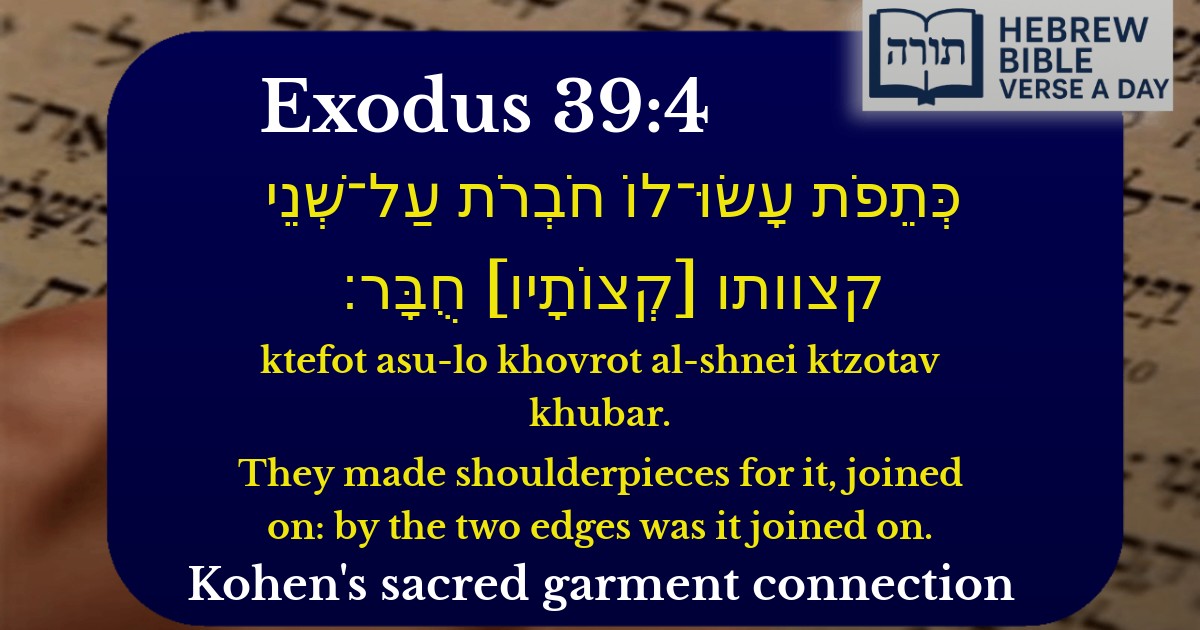Join Our Newsletter To Be Informed When New Videos Are Posted
Join the thousands of fellow Studends who rely on our videos to learn how to read the bible in Hebrew for free!
Hebrew Text
כְּתֵפֹת עָשׂוּ־לוֹ חֹבְרֹת עַל־שְׁנֵי קצוותו [קְצוֹתָיו] חֻבָּר׃
English Translation
They made shoulderpieces for it, joined on: by the two edges was it joined on.
Transliteration
Ktefot asu-lo khovrot al-shnei ktzotav khubar.
Hebrew Leining Text
כְּתֵפֹ֥ת עָֽשׂוּ־ל֖וֹ חֹבְרֹ֑ת עַל־שְׁנֵ֥י (קצוותו) [קְצוֹתָ֖יו] חֻבָּֽר׃
Parasha Commentary
📚 Talmud Citations
This verse is not quoted in the Talmud.


Context of the Verse
The verse (Shemot/Exodus 28:7) describes the construction of the Efod, a sacred garment worn by the Kohen Gadol (High Priest). The shoulderpieces (Kesefot) were an integral part of the Efod, designed to hold the breastplate (Choshen) in place.
Explanation of the Shoulderpieces
Rashi explains that the shoulderpieces were two straps made of the same material as the Efod (gold, blue, purple, and scarlet wool, and fine linen). These straps were attached to the Efod at its two upper corners, forming a sort of "shoulder harness" that rested on the Kohen Gadol's shoulders.
Symbolism of the Shoulderpieces
According to the Midrash (Shemot Rabbah 38:8), the shoulderpieces symbolize the bearing of responsibility. The Kohen Gadol carries the weight of the Jewish people on his shoulders, much like the two tablets of the Ten Commandments were carried by Moshe. The Talmud (Zevachim 88b) further connects the shoulderpieces to the concept of teshuvah (repentance), as the Kohen Gadol atones for the sins of the nation.
Technical Details of the Joining
Spiritual Lessons
The Kli Yakar emphasizes that the joining of the shoulderpieces teaches the importance of unity in serving Hashem. Just as the straps were firmly connected, so too must the Jewish people be united in their devotion to Torah and mitzvot. The shoulderpieces also remind us of the collective responsibility each Jew has toward the spiritual welfare of the community.